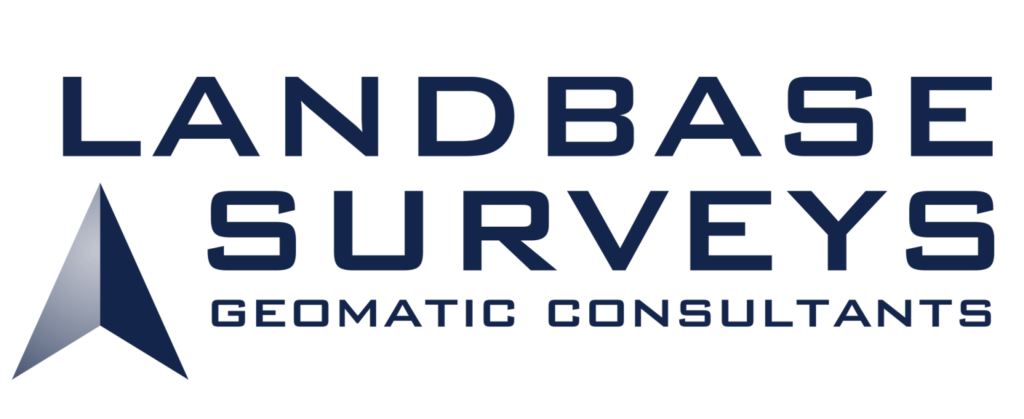Research of Legal Documents: The process starts with research into the property’s legal history. This includes reviewing deeds, property registration of Ireland maps, ordnance survey of Ireland maps, previous surveys, and other relevant documents that define the property’s legal description.
Surveyors visit the site to gather data, they can use specialized tools such as total stations, GPS, and measuring tapes to locate existing boundary markers like pins, stones, or stakes, and to measure distances and angles.
The surveyor may also identify natural or man-made features that might influence the boundary, such as fences, ditches, tree lines or hedge rows.
Using the data collected from the field and the historical records, the surveyor calculates the exact boundary lines of the property. Discrepancies between the physical evidence (like existing boundary markers) and the legal descriptions are carefully analysed to resolve any conflicts.
Placement of Boundary Markers when required. The surveyor places new markers or re-establishes old ones at the corners and along the property lines. These markers are typically iron rods, or wooden stakes which serve as the physical reference points for the property boundaries.
Creation of a Boundary Survey and Land Registry (now Tailte) Compliant Map: The results of the survey are compiled and a detailed map that shows the property lines, dimensions, and any significant features is used to compose a land registry compliant map to allow for registration or rectification of the property.
Knowing your property boundaries in Ireland is critically important for several reasons, both legal and practical. Here’s why understanding and clearly defining your property boundaries is essential.
Legal Ownership and Disputes:
– Preventing Boundary Disputes: Clearly defined boundaries help prevent disputes with neighbours over land ownership. In Ireland, boundary disputes can lead to costly and lengthy legal battles, so knowing your boundaries can save you from significant stress and financial burden.
– Establishing Legal Ownership: Accurate knowledge of your property boundaries is essential to establish and defend your legal ownership of the land. This is particularly important when selling, developing, or transferring property rights.
Property Transactions:
– Accurate Property Description: When buying or selling property, it’s crucial that the boundaries are accurately described in the property deeds and maps. This ensures that both parties understand exactly what is being bought or sold.
– Avoiding Future Issues: Misunderstandings about property boundaries during a transaction can lead to problems later on, such as legal disputes or issues with title registration. Ensuring that boundaries are clear at the time of sale helps avoid these issues.
Development and Land Use:
– Planning Permission: When applying for planning permission in Ireland, it’s essential to know your property boundaries to ensure that any new construction or development does not encroach on neighbouring properties. This knowledge is crucial for complying with planning regulations.
– Maximising Land Use: Knowing the exact boundaries allows you to maximize the use of your land, whether for building, farming, or other activities. It ensures that all your land is utilised effectively without the risk of encroachment.
Regulatory Compliance:
– Meeting Legal Requirements: Irish law requires that property boundaries are accurately recorded and maintained. This is particularly important for land registration with the Property Registration Authority of Ireland (now Tailte Eireann). Failure to have accurate boundaries can result in legal complications and challenges to your ownership.
– Boundary Maintenance: Property owners are often responsible for maintaining boundary features like fences, walls, or hedges. Knowing your boundaries ensures that you fulfil your obligations without overstepping into neighbouring properties.
Security and Privacy:
– Ensuring Privacy: Clear boundaries help maintain privacy by establishing clear limits to your property, ensuring that your space is respected by neighbours and passersby.
– Securing Your Property: Knowing the exact limits of your property is essential for securing it, whether by building fences, walls, or other forms of physical barriers. This helps protect your land and any structures or resources on it.
Taxation and Property Valuation:
– Accurate Property Valuation: Accurate knowledge of your property’s boundaries is important for determining its correct value. This is crucial when assessing property taxes, applying for loans, or selling the property.
– Tax Compliance: In Ireland, property taxes and levies are often based on land size and usage. Knowing your boundaries ensures that you are accurately taxed, avoiding potential disputes with tax authorities.
Inheritance and Estate Planning:
– Clear Inheritance Planning: When passing on property through inheritance, it’s vital to have clearly defined boundaries to avoid disputes among heirs. Precise boundaries ensure that each beneficiary receives the correct portion of land as intended.
– Simplifying Estate Management: For larger estates, knowing and marking boundaries helps in managing and dividing the land among different uses or family members, facilitating smoother estate management.
Historical and Cultural Preservation:
– Preserving Historical Boundaries: In Ireland, many properties have historical or cultural significance, with boundaries that have been established for centuries. Knowing and preserving these boundaries can be important for maintaining the cultural heritage of the land.
– Protecting Heritage Sites: If your property includes or is adjacent to a heritage site, knowing your boundaries ensures that these important cultural assets are protected and that any development complies with heritage preservation laws.
In summary, knowing your property boundaries in Ireland is crucial for legal security, effective land use, and preventing disputes. It safeguards your property rights, ensures compliance with local regulations, and contributes to the smooth management of your land and assets.


